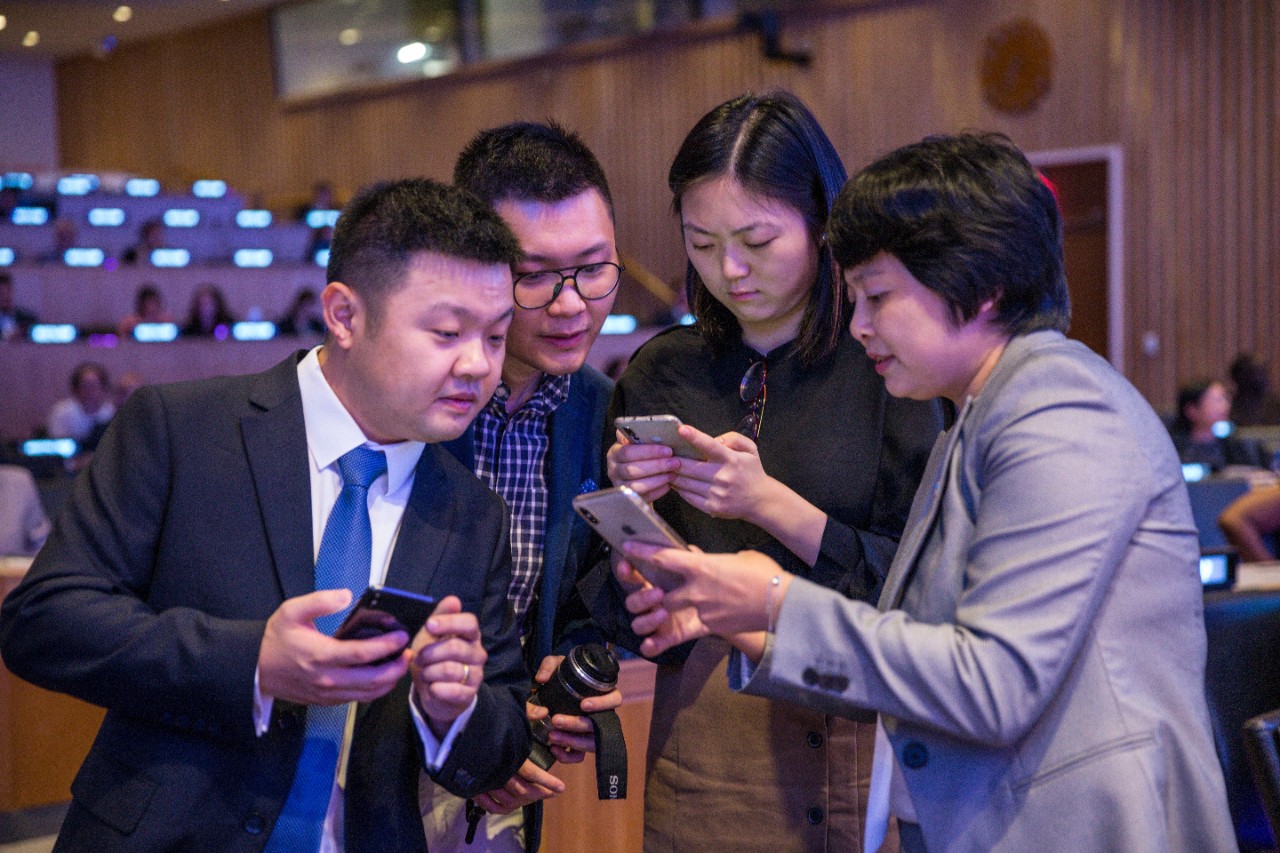#LeaveNoOneBehind in digital transformation: How countries can develop inclusive digital transformation agendas
May 24, 2021

Digital Future of Development Dialogue. 25 September 2019 – New York, NY.
The COVID-19 pandemic has highlighted the urgency for countries to accelerate their national digital transformation and to unlock the potential of digital technologies for their national economy and society more broadly. As governments are rushing to develop digital strategies, expand connectivity and implement digital public services for the “New Normal”, we must ensure that people are put at the center of these transformation efforts and that no one is left behind in the transition to digital societies. Digital divides, i.e. the gaps between those who have access to digital technologies and content and those who have not, are widening.
As persistent digital divides act as amplifiers of existing social, cultural, and economic inequalities, accelerating digital transformation can leave the most vulnerable further behind.
Who is being left behind in digital transformation?
People can be left behind because of discrimination, geography, shocks and fragility, socio-economic status, and weak governance. These factors also drive the persistence of digital divides, for example between genders, rural and urban populations and between different socioeconomic groups.
According to ITU’s 2020 ‘Measuring digital development’ report, in 2019, about 3.7 billion people globally were offline, i.e., not using the internet. In least developed countries (LDCs), 17% of the rural population has no mobile coverage and 19% of the rural population is only covered by a 2G network. As digitalization and particularly mobile broadband adoption have been linked to economic growth, increasing digital transformation is amplifying these existing socioeconomic inequalities. The risk is particularly high for women and girls, youth, persons with disabilities, older persons, and people living in remote areas.
‘Digital inclusion’ goes beyond access to technology
In the Roadmap for Digital Cooperation, the UN Secretary General notes, that “(…) everyone should have an equal opportunity to become empowered through ICT”. This includes both having affordable access as well as having the required skills and knowledge to adopt and use digital technologies. It also means that relevant content must be available locally and accessible for all. As our awareness of the risks and challenges associated with digital technologies, such as misinformation, hate speech and cybercrime grows, ‘inclusive’ digital transformation also means protecting people from the adverse effects of digital technologies. Creating awareness for technology risks and empowering people to actively mitigate them, is becoming a key aspect of digital inclusion.
Adopting a ‘digital inclusion’ lens in national digital transformation agendas
Deploying digital technologies widely will not automatically include those most left behind and decrease existing inequalities. Countries must take dedicated action to close persistent last-mile-gaps, create incentives for the private sector and reduce structural barriers to technology adoption. Applying a ‘leaving no one behind’ framework to national digital transformation, points to three mutually reinforcing levers for advancing inclusive digital transformation:
A key challenge for advancing digital inclusion is the lack of disaggregated data about the different dimensions of digital inclusion both on country and global level. Reliable data on technology access and usage is often missing or incomplete. Globally, efforts are being undertaken to create a set of metrics to measure digital inclusion. On the country level, governments need to integrate digital inclusion metrics into their digital strategies, establish clear baselines and track results. New methods for closing knowledge gaps around digital inclusion, such as micro surveys and social media monitoring and analysis need to be explored.
Those most vulnerable to digital exclusion must be empowered to participate in national and international dialogues for digital transformation. Taking a whole-of-society approach to digital transformation means including all parts of society in setting digital transformation agendas, including through consultations and public dialogues. Local civil society organisations on digital issues play a crucial role in advocating for those furthest left behind. In Kosovo, UNDP supported a multi-stakeholder dialogue on the national digital transformation agenda that brought together representatives from the national government, local innovation hubs and private sector partners.
Countries must enact dedicated policies and interventions to address the drivers of digital exclusion. These can include interventions for digital capacity and skills building, innovative approaches to increase meaningful connectivity and creating regulatory schemes that protect the most vulnerable. Universal access policies, private-public partnerships and cross-sectoral collaboration are key mechanisms for acceleration, as is South-South collaboration and the adoption of Digital Public Goods.
Applying a ‘leaving no one behind’ lens to national digital transformation means putting people at the heart of digital transformation agendas to ensure that existing inequalities are not replicated in the digital realm. It means examining digital exclusion mechanisms closely, empowering people to shape digital transformation agendas and enacting dedicated policies to advance digital inclusion. Only by taking explicit action, can we ensure an equitable digital future for all.

 Locations
Locations